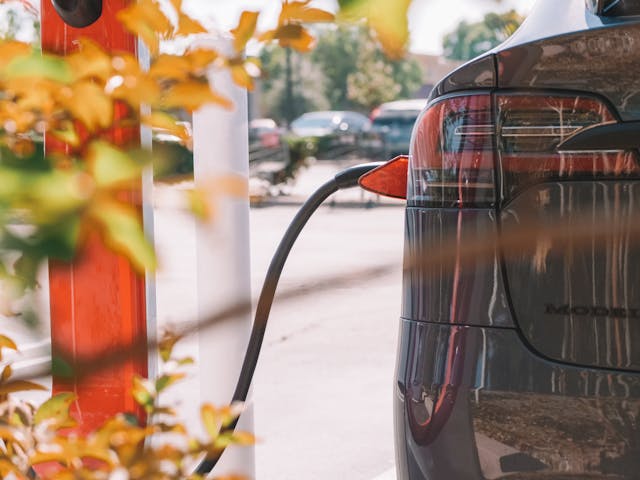

Thailand has set its sights on becoming the main electric vehicle hub of Southeast Asia by 2030. Currently, the market share of EVs in the country is at 4%. Due to favorable EV policies in Thailand, where barriers to entry and importation costs are reduced, that rate is expected to increase in the near future. The government has also implemented reforms to help spur the productivity of EV manufacturing in Thailand.
In the recent report by YCP Solidiance titled “Electric Vehicle Development and Deployment in Thailand: Moving Towards an Acceleration of EV Adoption,” public sector support is crucial to harnessing the opportunities of electric vehicle usage in Thailand. Creating better infrastructure and incentives for the uptake of electric vehicles will certainly improve Thailand’s EV system in the long term.
What are the opportunities and challenges in EV adoption in Thailand? How can the public and private sectors work together to accelerate EV adoption in the country? We look at the key players of the sector and how they can support consumers to transition to electric vehicles.

According to the Electric Vehicle Development and Deployment in Thailand, the robust growth rate of EV adoption in Thailand is expected to strengthen in the next five years. From 1,897 units sold in 2020, it is projected to reach 12,500 units in 2025, reaching a market value of 886 million USD. Strong investments from the public and private sectors have largely contributed to this growth.
In terms of electric vehicle types, consumers are leaning more toward hybrid electric vehicles (HEV) over plug-in hybrids (PHEV) and battery electric vehicles (BEV). The current EV infrastructure in Thailand is not sufficient for purely electric vehicles, as there is uneven distribution of charging stations across the country. 70% of charging stations are in central areas such as Bangkok, Nonthaburi, and Samutprakarn.
Charging station usage is divided into three types: nighttime users that make up 80% of the segment, who prefer to charge their vehicles overnight at home; daytime users at 15% of the segment, who prefer to charge at commercial establishments; and on-the-go users that make up 5% of the segment, who charge along their commuting routes.
Better EV infrastructure is the key to encouraging Thai motorists to choose EVs over petrol vehicles. Most consumers understand the benefits of transitioning to EVs but are discouraged by the lack of charging stations as well as incentives. An improvement in Thailand’s EV policy to widen the country’s charging network, especially outside of Bangkok, is crucial to increase EV adoption.
The low geographical reach of the country’s EV charging network is also unappealing to market players who are looking at Thailand for investments. This will also affect Thailand’s EV roadmap for 2030.
If the government overcomes the major challenges in EV adoption in Thailand, it may speed up its goal of becoming the region’s biggest EV hub. Becoming the market leader in production also requires adoption in the local market. When all these come together, all the opportunities for adoption of electric vehicles in Thailand will increase, and the market will become a major player in the local economy.

Digital Lending in Southeast Asia: Current Trends and Future Outlook
Digital lending in Southeast Asia (SEA) has been on an upward trajectory, significantly enhancing financial access for both individuals and businesses. The region's high internet and mobile penetration rates have facilitated this growth, enabling more people to access financial services conveniently. Governments across SEA are actively promoting digital lending as a means to improve financial inclusion, particularly for the underbanked and unbanked populations. For instance, digital lenders in countries like Indonesia and the Philippines have capitalized on the surge in internet usage to offer innovative lending solutions.

The Latest Trends and Developments in SEA’s Digital Payments Landscape
The adoption of digital payments in Southeast Asia (SEA) has accelerated, driven by technological advancements, government initiatives, and changing consumer behaviors. It has evolved from simple online transactions to sophisticated financial ecosystems that include various payment methods such as mobile wallets, QR code payments, and Buy Now Pay Later (BNPL) options.

Navigating the Digital Era: Future Jobs and Skills in the Age of Digitalization
The job market's transformation driven by digitalization highlights the need to understand emerging trends and acquire essential skills for thriving.

Navigating Key Challenges in Southeast Asia’s EV Market
Southeast Asia (SEA) finds itself at a crucial juncture in the journey towards electric vehicle (EV) production and adoption as the world transitions towards sustainable transportation solutions. The region has several significant keys for developing the EV industry, such as Indonesia's nickel supply and Thailand's EV manufacturing potential. However, the ASEAN EV industry faces many challenges and threats that must be overcome to ensure success in the region.